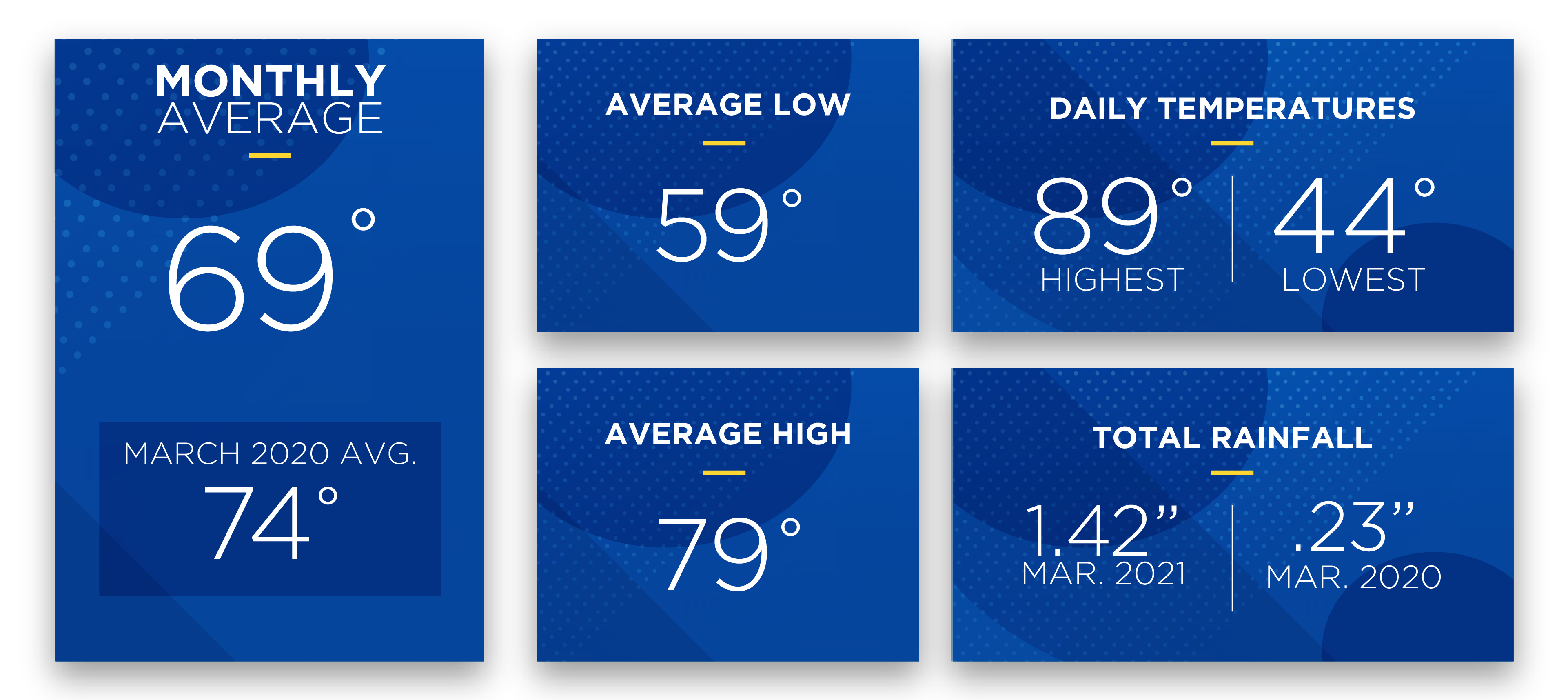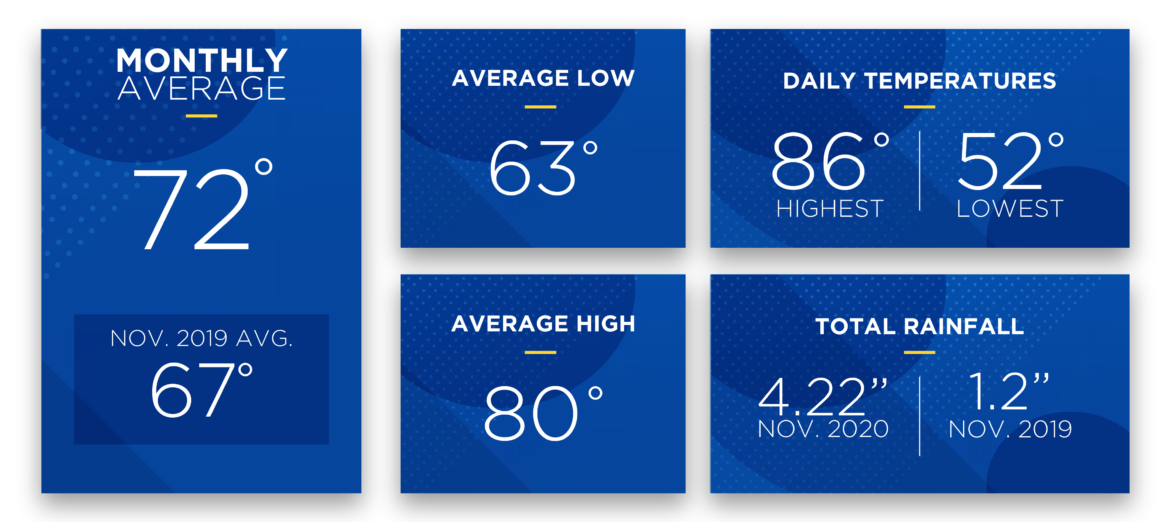March 2021 Sunshine State Stats
Spring officially arrived in Central Florida in March 2021. Temperatures fluctuated from the high 80s to the low to mid-40s. The month ended with an eight-day streak of high temperatures that reached into the 80s. In total, 18 days in the month reached above 80 degrees. Members may notice an increase in their March electric usage due to heating and cooling needs during the month.
For March 2021 the average temperature was a comfortable 69 degrees, which is 5 degrees lower than the average temperature in March 2020. The highest recorded temperature was 89 degrees and the lowest recorded was 44 degrees. The average high temperature was 79 degrees, and the average low temperature was 59.
Rainfall for March 2021 was below the average of 4.03 inches with only 1.42 inches for the month. Precipitation in March 2021 is higher than last year’s total of only .23 inches.
Again, members may see an increase in their energy usage for March 2021. Central Florida is experiencing more days that reached highs of over 80 degrees. Daily temperature fluctuations mean members used their HVACs to cool their homes during the day and for heat after the sun went down. The highest daily temperature fluctuation was 26 degrees.
April forecast:
Expect sunny days in April 2021 with little chance of rain. The weather forecast calls for highs in the 80s and low 90s with lows in the 50s and 60s.
To check historical usage, log into SmartHub to view past bills and consumption charts. If your usage is high, SECO offers several energy-efficiency tools to help you identify energy wasters. Take the Home Energy Assessment to receive a detailed email tailored to your home’s features and lifestyle. The energy-saving advice will provide low-cost ways to decrease your usage – and your electric bill.
To easily calculate how much energy your appliances, lighting, electronic devices, and other energy-using items in your home consume, use the Energy Estimator.






